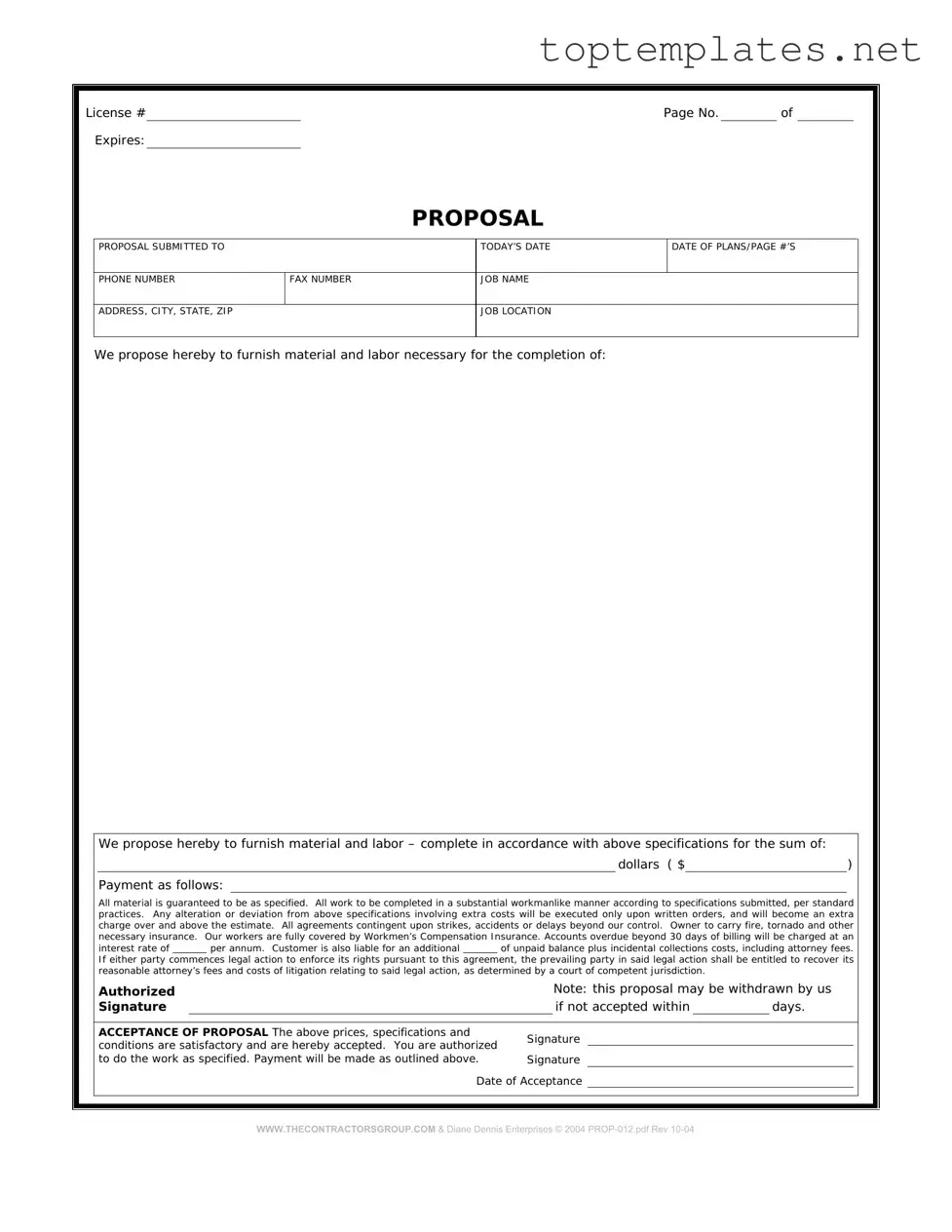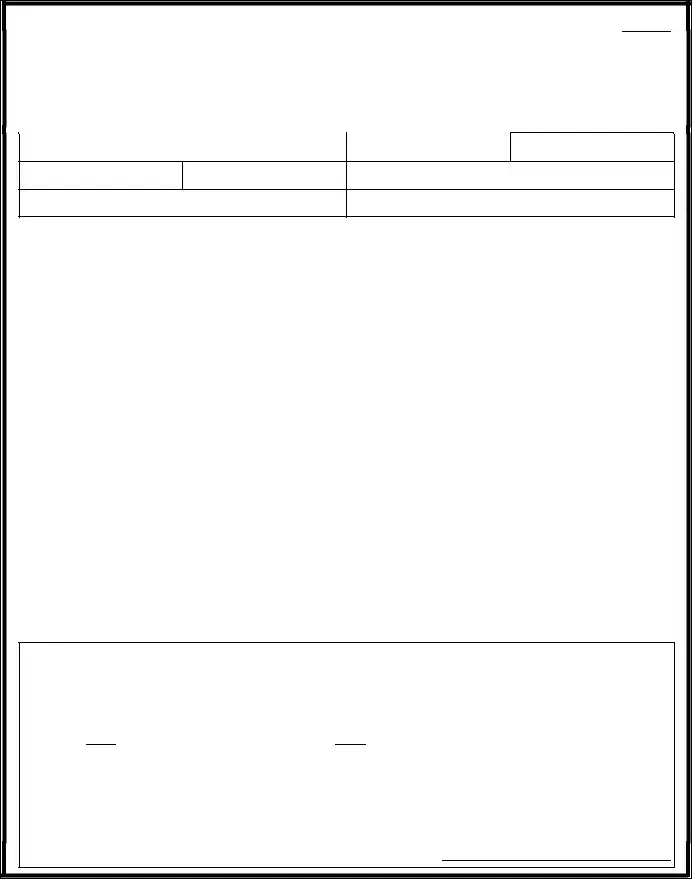What is a Construction Proposal Form?
A Construction Proposal Form is a document submitted by a contractor to a client, detailing the scope of work, materials needed, labor requirements, timeline, and the cost estimates for a construction project. It serves as a formal offer to complete a construction job according to specified conditions.
Why is a Construction Proposal Form important?
This form is crucial because it lays out the details of the construction project, ensuring both the contractor and the client understand what work will be done, when it will be completed, and how much it will cost. It helps in preventing misunderstandings and disputes during the project.
What should be included in a Construction Proposal Form?
It should contain the contractor’s information, detailed description of the project, materials and labor needed, cost estimates, project timeline, payment schedule, and terms and conditions, including warranties or special conditions.
How does a Construction Proposal Form differ from a contract?
While a proposal outlines the details and estimated costs of a project, a contract is a legally binding agreement that includes the agreed terms, scope of work, timelines, and costs as accepted by both parties. A proposal can become a contract if it is accepted and signed by both the client and the contractor.
Who prepares the Construction Proposal Form?
Typically, the contractor or a construction company seeking to undertake a project prepares the Construction Proposal Form. However, architects or project managers representing the contractor might also prepare this form.
Is it mandatory to use a Construction Proposal Form for every project?
While not mandatory for every project, it is highly recommended for both small and large projects. Using a form ensures clarity and sets expectations right from the beginning, minimizing potential disputes.
Can a Construction Proposal Form be modified after submission?
Yes, it can be modified if both the client and the contractor agree to the changes. Modifications should be documented and signed by both parties to ensure mutual agreement.
What happens if the actual costs exceed the estimates in the Construction Proposal Form?
If actual costs exceed estimates, the contractor should communicate this to the client as soon as possible. Depending on the terms agreed upon in the proposal or resulting contract, additional costs may require client approval and could result in an amended agreement.
How should one submit a Construction Proposal Form?
A Construction Proposal Form can be submitted in person, via email, or through a construction management software, depending on the client's requirements. Ensure that it is presented in a professional manner and includes all necessary detail and documentation to support the proposal.

